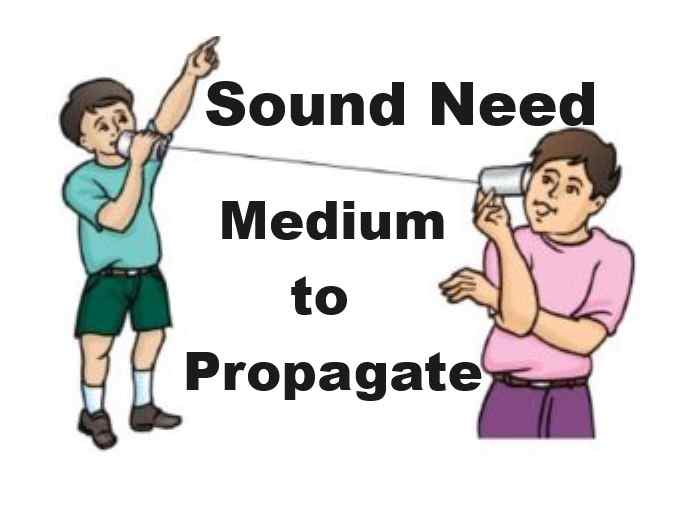Propagation of Sound Waves Exe-8A Long Ans Concise Physics ICSE Class 9 Selina Publishers Solutions. There is the solutions of Long Answer type Questions of your latest textbook which is applicable in 2024-25 academic session. Visit official Website CISCE for detail information about ICSE Board Class-9 Physics.

Propagation of Sound Waves Exe-8A Long Ans Concise Physics ICSE Class 9
| Board | ICSE |
| Class | 9 |
| Subject | Physics |
| Writer / Publication | Concise selina Publishers |
| Chapter-8 | Propagation of Sound Waves |
| Exe-8A | Production and Propagation of Sound Waves |
| Topics | Solution of Exe-8A Long Answer Type |
| Academic Session | 2024-2025 |
Production and Propagation of Sound Waves
Propagation of Sound Waves Exe-8A Long Ans Concise Physics ICSE Class 9 Selina Publishers Solutions
LONG ANSWER TYPE:
Question-1: (a) What is sound? How is it produced? (b) Describe a simple experiment which demonstrates that the sound produced by a tuning fork is due to vibrations of its arms.
Answer- Sound is a type of energy made by vibrations. When an object vibrates, it causes movement in surrounding air molecules. These molecules bump into the molecules close to them, causing them to vibrate as well
Strike one arm of a tuning fork on a rubber pad. A sound is emitted from the tuning fork and simultaneously the prongs are seen blurred. This is due to rapid vibrations produced in them. When this vibrating fork is brought near a suspended ball, it is observed that the ball starts oscillating to and fro.
Thus, a vibrating source is necessary for the production of sound.
Question-2: Describe in brief, with the aid of a labelled diagram, an experiment to demonstrate that a material medium is necessary for the propagation of sound.
Answer- take a bell jar with an electronic buzzer placed inside such a way that its electronic terminals are fused in airtight condition through the glass. The base of the bell jar is hot glued to a hard plate and the base of the plate has an exhaust pipe fitted to a suction air pump ready to draw the air inside.
The electronic buzzer is then switched on and one can hear the sound coming from the bell. This is because the air inside the bell is transmitting the sound waves to the wall of the bell jar which in turn vibrates and transmits the sound outside.
Then the exhaust pump is then switched on to draw out the air. As the air is sucked out of the bell jar, the sound intensity appears to go down outside. Finally, a point comes when no sound is heard from the buzzer although it has been buzzing.
This proves that sound needs a material medium to propagate.

Question-3: Describe an experiment to show that in wave motion. only energy is transferred, but particles of medium do not leave their positions.
Answer- Take a large trough and fill it water. Place a small cork away from the sides of the trough when the surface of the water is steady. Now gently drop a coin at one end of the trough.
You will observe that ripples will originate from the point from where the coin is dropped and travels outward. However, the cork will move up and down but not along the ripples (outwards).
This shows that the energy is transferred in all directions throughout the medium. It is the disturbance that travels outwards and not the particles of the medium. The particles of the medium vibrate up and down and to and fro from their mean position.
Question-4: How do the following factors affect, if at all, the speed of sound in air :
(i) frequency of sound,
(ii) temperature of air,
(iii) pressure of air,
(iv) moisture in air?
Answer-
(i)=> No effect.
(ii)=> Speed of sound increase with the increase in temperature.
(iii)=> No effect.
(iv)=>Speed of sound increases with the increase of moisture in air.
Question-5: How are the wave velocity V, frequency f and wavelength of a wave related ? Derive the relationship.
Answer- Wave Velocity = Frequency × Wave Length
Question-6: Describe a simple experiment to determine the speed of sound in air. What approximation is made in the method described by you?
Answer- For this experiment you need a cracker, stopwatch, meter tape and help of one of your friend.
Choose two spots. Tell your friend to stand at one of the spot with the cracker and pick the other spot for yourself at a distance of 300 m from the first spot such that you can see the cracker. Performing the experiment is dusk will help you to view the cracking of cracker easily.
Now signal your friend to burn the cracker. Once you see the flash of explosion of cracker, start the stop watch. Once you hear the sound of explosion of cracker, stop the stop watch.
—: end of Propagation of Sound Waves Exe-8A Long Ans Concise Physics ICSE Class 9 Selina Publishers Solutions:—
Return to:- Concise Selina Physics ICSE Class-9 Solutions
Thanks


